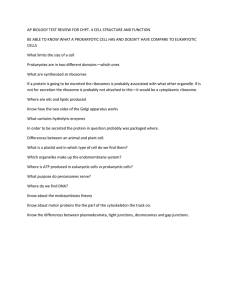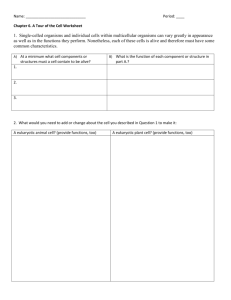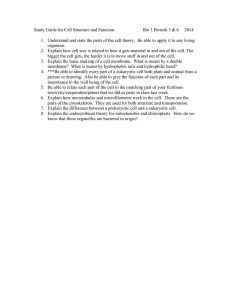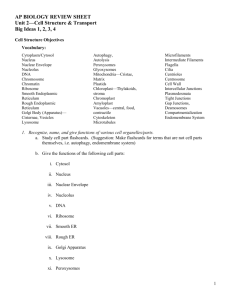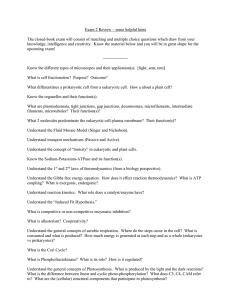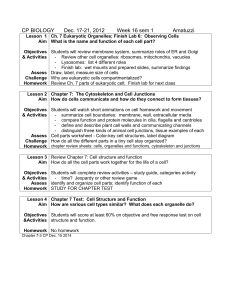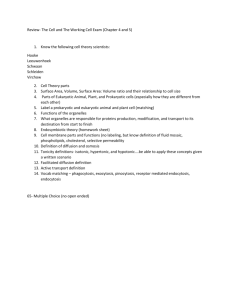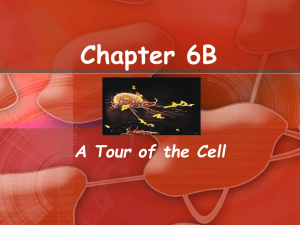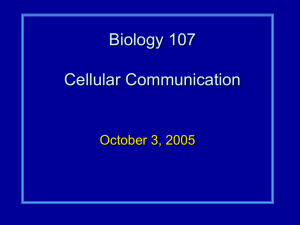Cell Unit Test Study Guide (50 MC &... SEM
advertisement
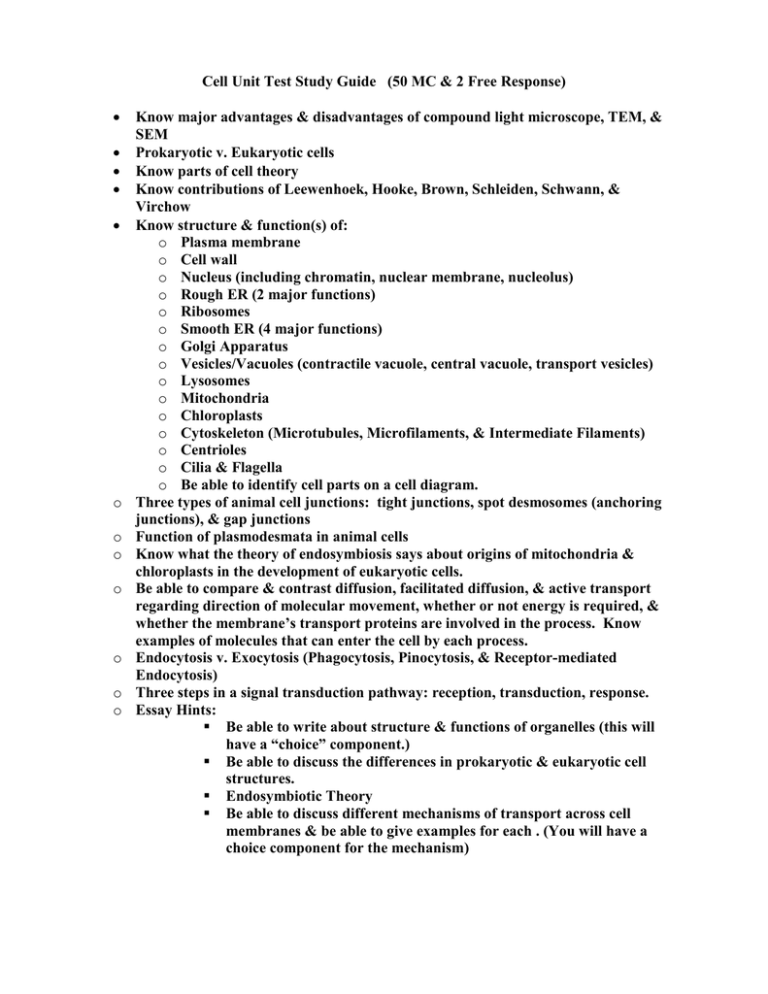
Cell Unit Test Study Guide (50 MC & 2 Free Response) o o o o o o o Know major advantages & disadvantages of compound light microscope, TEM, & SEM Prokaryotic v. Eukaryotic cells Know parts of cell theory Know contributions of Leewenhoek, Hooke, Brown, Schleiden, Schwann, & Virchow Know structure & function(s) of: o Plasma membrane o Cell wall o Nucleus (including chromatin, nuclear membrane, nucleolus) o Rough ER (2 major functions) o Ribosomes o Smooth ER (4 major functions) o Golgi Apparatus o Vesicles/Vacuoles (contractile vacuole, central vacuole, transport vesicles) o Lysosomes o Mitochondria o Chloroplasts o Cytoskeleton (Microtubules, Microfilaments, & Intermediate Filaments) o Centrioles o Cilia & Flagella o Be able to identify cell parts on a cell diagram. Three types of animal cell junctions: tight junctions, spot desmosomes (anchoring junctions), & gap junctions Function of plasmodesmata in animal cells Know what the theory of endosymbiosis says about origins of mitochondria & chloroplasts in the development of eukaryotic cells. Be able to compare & contrast diffusion, facilitated diffusion, & active transport regarding direction of molecular movement, whether or not energy is required, & whether the membrane’s transport proteins are involved in the process. Know examples of molecules that can enter the cell by each process. Endocytosis v. Exocytosis (Phagocytosis, Pinocytosis, & Receptor-mediated Endocytosis) Three steps in a signal transduction pathway: reception, transduction, response. Essay Hints: Be able to write about structure & functions of organelles (this will have a “choice” component.) Be able to discuss the differences in prokaryotic & eukaryotic cell structures. Endosymbiotic Theory Be able to discuss different mechanisms of transport across cell membranes & be able to give examples for each . (You will have a choice component for the mechanism)

